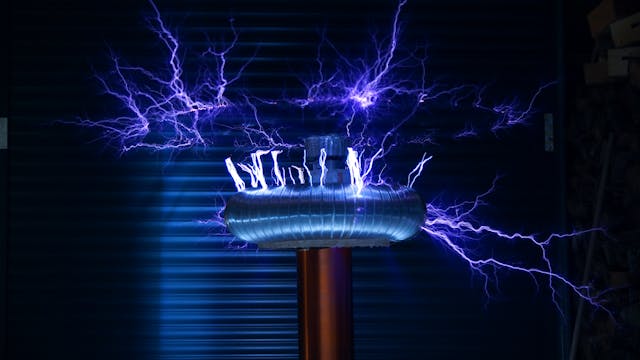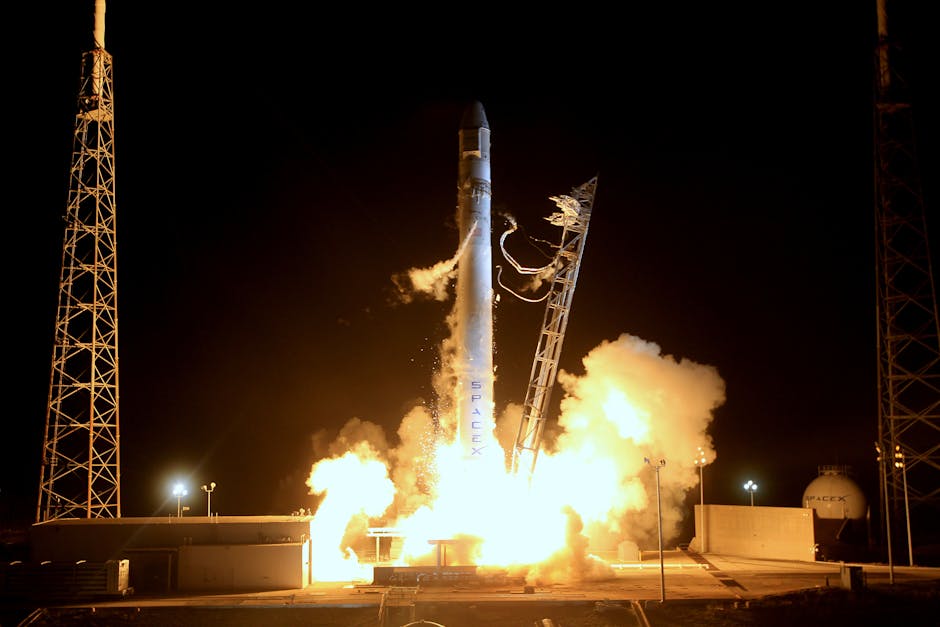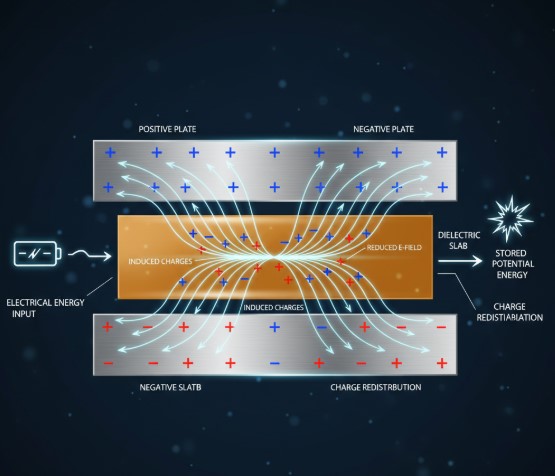This examination of Coulomb’s Law explores the core concepts of electromagnetism, looking into its historical origins, mathematical expression, and real-world uses. We begin by recognizing the significant contributions of Charles-Augustin de Coulomb, an 18th-century French physicist, whose detailed experiments established the foundation for this essential law. His development of the torsion balance, an important instrument in his research, enabled accurate measurement of electrostatic forces. Imagine it as a highly sensitive scale, but designed for electrical charges!
Table of Contents
Moving forward, we’ll examine the mathematical formulation of Coulomb’s Law, which describes the electrostatic force between two point charges. For example, if you have two tiny charged spheres, Coulomb’s Law tells us precisely how strongly they’ll attract or repel each other. This force is directly proportional to the product of the charges and inversely proportional to the square of the distance between them. Think of it like this: the closer the charges, the stronger the force; the further apart, the weaker the force.
We’ll see numerical examples like calculating the force between two charges of +2 µC and +4 µC separated by 0.1 meters. Furthermore, we’ll see how this law is crucial in various fields, from chemistry (understanding ionic bonds) to electrical engineering (designing capacitors). Historical context is essential to understanding the development of scientific laws.
We also Published
“The only way to do great work is to love what you do.” – Steve Jobs
Historical Context of Coulomb’s Law
Charles-Augustin de Coulomb, a prominent French physicist of the 18th century, played a pivotal role in establishing the foundation of electrostatics. His work, particularly the invention of the torsion balance, allowed for precise measurements of the electrostatic forces between charged objects. Coulomb’s meticulous experiments and subsequent mathematical formulation of the inverse square law laid the groundwork for future advancements in electromagnetism.
Coulomb’s work built upon earlier investigations by scientists like Priestley and Cavendish. While these earlier researchers had hinted at the inverse square relationship, Coulomb’s precise measurements and publication of his results solidified the law’s place in physics. This meticulous approach to scientific inquiry exemplifies the importance of experimental validation in establishing fundamental physical laws.
Mathematical Formulation of Coulomb’s Law
Coulomb’s Law describes the electrostatic force between two point charges. It states that the force is directly proportional to the product of the magnitudes of the charges and inversely proportional to the square of the distance between them. Mathematically, this is expressed as:
### F = k \frac{|q_1 q_2|}{r^2} ###where:
- ##F## is the electrostatic force between the charges.
- ##k## is Coulomb’s constant (approximately ##8.98755 × 10^9 N⋅m^2/C^2##).
- ##q_1## and ##q_2## are the magnitudes of the two point charges.
- ##r## is the distance between the centers of the two point charges.
- ##r## is the distance between the centers of the two point charges.
The absolute value signs (##| |##) indicate that the force is a scalar quantity and its direction depends on the signs of the charges. If the charges have the same sign (both positive or both negative), the force is repulsive; if they have opposite signs, the force is attractive.
Illustrative Examples and Numerical Examples
Example 1: Calculating the Force
Consider two point charges, ##q_1 = 2 × 10^{-6} C## and ##q_2 = 4 × 10^{-6} C##, separated by a distance of ##0.1 m##. Calculate the electrostatic force between them.
Using Coulomb’s Law: ### F = (8.98755 × 10^9 N⋅m^2/C^2) \frac{(2 × 10^{-6} C)(4 × 10^{-6} C)}{(0.1 m)^2} = 71.9 × 10^3 N ###
The force is repulsive, as both charges are positive.
Applications of Coulomb’s Law
Coulomb’s Law has wide-ranging applications in various scientific and engineering disciplines. It forms the basis for understanding the behavior of charged particles in atoms, molecules, and materials. In electrical engineering, it’s crucial for designing capacitors, calculating the forces in electrical circuits, and analyzing the behavior of electrical systems.
Furthermore, Coulomb’s Law is fundamental to understanding phenomena like static electricity, lightning, and the behavior of ions in solutions. Its principles are essential in fields like materials science, chemistry, and even astrophysics, where the interactions between charged particles play a critical role.
Applications in Chemistry
Coulomb’s Law is essential in chemistry for understanding intermolecular forces, particularly ionic bonding. The electrostatic attraction between oppositely charged ions is a direct consequence of Coulomb’s Law, dictating the stability and properties of ionic compounds. This law is vital for understanding the structures and properties of ionic crystals and their behavior in various chemical reactions.
The strength of ionic bonds is directly related to the magnitude of the charges and the distance between the ions. For example, the strong electrostatic attraction between sodium (Na+) and chlorine (Cl–) ions in sodium chloride (NaCl) leads to the formation of a stable ionic crystal. This principle is crucial for predicting the stability and properties of various ionic compounds.
Similar Problems
Problem 1
Find the force between two charges of ##+2 µC## and ##+4 µC## separated by a distance of ##0.5 m##.
We are given two charges:
- Charge 1, ## q_1 = +2\, \mu\text{C} ##
- Charge 2, ## q_2 = +4\, \mu\text{C} ##
- Separation distance, ## r = 0.5\, \text{m} ##
The force between two point charges can be calculated using Coulomb’s Law:
### F = k \frac{|q_1 q_2|}{r^2} ###
Where:
- ## F ## is the force between the charges.
- ## k = 8.988 \times 10^9\, \text{N}\cdot\text{m}^2/\text{C}^2 ## (Coulomb’s constant)
- ## q_1 ## and ## q_2 ## are the magnitudes of the charges.
- ## r ## is the distance between the centers of the two charges.
Step-by-Step Calculation:
1. Convert microcoulombs to coulombs:
### q_1 = 2\, \mu\text{C} = 2 \times 10^{-6}\, \text{C} ###
### q_2 = 4\, \mu\text{C} = 4 \times 10^{-6}\, \text{C} ###
2. Apply Coulomb’s Law:
### F = 8.988 \times 10^9 \times \frac{(2 \times 10^{-6})(4 \times 10^{-6})}{(0.5)^2} ###
3. Calculate the numerator (product of charges):
### (2 \times 10^{-6}\, \text{C}) \times (4 \times 10^{-6}\, \text{C}) = 8 \times 10^{-12}\, \text{C}^2 ###
4. Calculate the denominator (distance squared):
### (0.5\, \text{m})^2 = 0.25\, \text{m}^2 ###
5. Substitute the calculated values back into the equation:
### F = 8.988 \times 10^9 \times \frac{8 \times 10^{-12}}{0.25} ###
6. Simplify the fraction:
### \frac{8 \times 10^{-12}}{0.25} = 32 \times 10^{-12} = 3.2 \times 10^{-11} ###
7. Final Calculation of Force:
### F = 8.988 \times 10^9 \times 3.2 \times 10^{-11} = 0.287 \, \text{N} ###
Conclusion:
The force between the two charges is approximately ##0.287\, \text{N}##. Since both charges are positive, the force is repulsive.
Problem 2
Calculate the force between a ##+10 µC## charge and a ##-5 µC## charge separated by ##0.2 m##.
To calculate the force between two charges, we can use Coulomb’s Law. Here’s a step-by-step solution:
Calculating the Force Between Two Charges
We are given two charges:
- Charge 1, ## q_1 = +10\, \mu\text{C} ##
- Charge 2, ## q_2 = -5\, \mu\text{C} ##
- Separation distance, ## r = 0.2\, \text{m} ##
The force between two point charges can be calculated using Coulomb’s Law:
### F = k \frac{|q_1 q_2|}{r^2} ###
Where:
- ## F ## is the force between the charges.
- ## k = 8.988 \times 10^9\, \text{N}\cdot\text{m}^2/\text{C}^2 ## (Coulomb’s constant)
- ## q_1 ## and ## q_2 ## are the magnitudes of the charges.
- ## r ## is the distance between the centers of the two charges.
Step-by-Step Calculation:
1. Convert microcoulombs to coulombs:
### q_1 = 10\, \mu\text{C} = 10 \times 10^{-6}\, \text{C} ###
### q_2 = -5\, \mu\text{C} = -5 \times 10^{-6}\, \text{C} ###
2. Apply Coulomb’s Law:
### F = 8.988 \times 10^9 \times \frac{|10 \times 10^{-6} \times (-5) \times 10^{-6}|}{(0.2)^2} ###
3. Calculate the numerator (product of charges):
### |10 \times 10^{-6}\, \text{C} \times (-5) \times 10^{-6}\, \text{C}| = 50 \times 10^{-12}\, \text{C}^2 ###
4. Calculate the denominator (distance squared):
### (0.2\, \text{m})^2 = 0.04\, \text{m}^2 ###
5. Substitute the calculated values back into the equation:
### F = 8.988 \times 10^9 \times \frac{50 \times 10^{-12}}{0.04} ###
6. Simplify the fraction:
### \frac{50 \times 10^{-12}}{0.04} = 1.25 \times 10^{-9} ###
7. Final Calculation of Force:
### F = 8.988 \times 10^9 \times 1.25 \times 10^{-9} = 11.235 \, \text{N} ###
Conclusion:
The force between the two charges is approximately ##11.235\, \text{N}##. Since one charge is positive and the other is negative, the force is attractive.
Problem 3
What is the distance between two ##+3 µC## charges if the force between them is ##27 N##?
Calculating the Distance Between Two Charges
We are given two charges and the force between them:
- Charge 1, ## q_1 = +3\, \mu\text{C} ##
- Charge 2, ## q_2 = +3\, \mu\text{C} ##
- Force between them, ## F = 27\, \text{N} ##
We need to find the separation distance, ## r ##, between the two charges.
The force between two point charges is given by Coulomb’s Law:
### F = k \frac{|q_1 q_2|}{r^2} ###
Where:
- ## F ## is the force between the charges.
- ## k = 8.988 \times 10^9\, \text{N}\cdot\text{m}^2/\text{C}^2 ## (Coulomb’s constant)
- ## q_1 ## and ## q_2 ## are the magnitudes of the charges.
- ## r ## is the distance between the centers of the two charges.
Step-by-Step Calculation:
1. Convert microcoulombs to coulombs:
### q_1 = 3\, \mu\text{C} = 3 \times 10^{-6}\, \text{C} ###
### q_2 = 3\, \mu\text{C} = 3 \times 10^{-6}\, \text{C} ###
2. Rearrange Coulomb’s Law to solve for ## r ##:
### r = \sqrt{ \frac{ k |q_1 q_2| }{ F } } ###
3. Substitute the known values into the equation:
### r = \sqrt{ \frac{ 8.988 \times 10^9 \times |3 \times 10^{-6} \times 3 \times 10^{-6}| }{ 27 } } ###
4. Calculate the product of the charges:
### |3 \times 10^{-6}\, \text{C} \times 3 \times 10^{-6}\, \text{C}| = 9 \times 10^{-12}\, \text{C}^2 ###
5. Compute the numerator:
### 8.988 \times 10^9 \times 9 \times 10^{-12} = 80.892 \times 10^{-3} = 0.080892 ###
6. Divide by the force:
### \frac{0.080892}{27} \approx 0.002996 \, \text{m}^2 ###
7. Take the square root to find ## r ##:
### r = \sqrt{0.002996} \approx 0.0547\, \text{m} ###
Conclusion:
The distance between the two ##+3\, \mu\text{C}## charges is approximately ##0.0547\, \text{meters}## (or ##5.47\, \text{centimeters}##). Since both charges are positive, the force is repulsive.
Problem 4
Two charges of ##-2 µC## and ##+6 µC## are separated by ##0.3 m##. What is the force between them?
Calculating the Force Between Two Charges
We are given two charges and the distance between them:
- Charge 1, ## q_1 = -2\, \mu\text{C} ##
- Charge 2, ## q_2 = +6\, \mu\text{C} ##
- Separation distance, ## r = 0.3\, \text{m} ##
The force between two point charges can be calculated using Coulomb’s Law:
### F = k \frac{|q_1 q_2|}{r^2} ###
Where:
- ## F ## is the force between the charges.
- ## k = 8.988 \times 10^9\, \text{N}\cdot\text{m}^2/\text{C}^2 ## (Coulomb’s constant)
- ## q_1 ## and ## q_2 ## are the magnitudes of the charges.
- ## r ## is the distance between the centers of the two charges.
Step-by-Step Calculation:
1. Convert microcoulombs to coulombs:
### q_1 = -2\, \mu\text{C} = -2 \times 10^{-6}\, \text{C} ###
### q_2 = +6\, \mu\text{C} = +6 \times 10^{-6}\, \text{C} ###
2. Apply Coulomb’s Law:
### F = 8.988 \times 10^9 \times \frac{|-2 \times 10^{-6} \times 6 \times 10^{-6}|}{(0.3)^2} ###
3. Calculate the numerator (product of charges):
### |-2 \times 10^{-6}\, \text{C} \times 6 \times 10^{-6}\, \text{C}| = 12 \times 10^{-12}\, \text{C}^2 ###
4. Calculate the denominator (distance squared):
### (0.3\, \text{m})^2 = 0.09\, \text{m}^2 ###
5. Substitute the calculated values back into the equation:
### F = 8.988 \times 10^9 \times \frac{12 \times 10^{-12}}{0.09} ###
6. Simplify the fraction:
### \frac{12 \times 10^{-12}}{0.09} = 133.333 \times 10^{-12} = 1.33333 \times 10^{-10} ###
7. Final Calculation of Force:
### F = 8.988 \times 10^9 \times 1.33333 \times 10^{-10} \approx 1.198\, \text{N} ###
Conclusion:
The force between the two charges is approximately ##1.198\, \text{N}## (which can be rounded to ##1.20\, \text{N}##). Since one charge is negative and the other is positive, the force is attractive.
Problem 5
If the force between two charges is ##14.38 N##, and the distance between them is ##0.2 m##, what is the magnitude of the charges if one is ##+5 µC##?
Calculating the Magnitude of a Charge
We are given the following information:
- Force between the charges, ## F = 14.38\, \text{N} ##
- Separation distance, ## r = 0.2\, \text{m} ##
- Charge 1, ## q_1 = +5\, \mu\text{C} ##
We need to find the magnitude of Charge 2, ## q_2 ##.
The force between two point charges is given by Coulomb’s Law:
### F = k \frac{|q_1 q_2|}{r^2} ###
Where:
- ## F ## is the force between the charges.
- ## k = 8.988 \times 10^9\, \text{N}\cdot\text{m}^2/\text{C}^2 ## (Coulomb’s constant)
- ## q_1 ## and ## q_2 ## are the magnitudes of the charges.
- ## r ## is the distance between the centers of the two charges.
Step-by-Step Calculation:
1. Convert microcoulombs to coulombs:
### q_1 = +5\, \mu\text{C} = 5 \times 10^{-6}\, \text{C} ###
2. Rearrange Coulomb’s Law to solve for ## |q_2| ##:
### |q_2| = \frac{F \cdot r^2}{k \cdot |q_1|} ###
3. Substitute the known values into the equation:
### |q_2| = \frac{14.38 \times (0.2)^2}{8.988 \times 10^9 \times 5 \times 10^{-6}} ###
4. Calculate the numerator (force multiplied by distance squared):
### 14.38 \times (0.2)^2 = 14.38 \times 0.04 = 0.5752 ###
5. Calculate the denominator (Coulomb’s constant multiplied by charge 1):
### 8.988 \times 10^9 \times 5 \times 10^{-6} = 44.94 \times 10^3 = 4.494 \times 10^4 ###
6. Compute the magnitude of Charge 2:
### |q_2| = \frac{0.5752}{4.494 \times 10^4} \approx 1.281 \times 10^{-5}\, \text{C} ###
### |q_2| = 12.81\, \mu\text{C} ###
Conclusion:
The magnitude of the second charge is approximately ##12.81\, \mu\text{C}##.
Since one charge is positive and the other charge’s sign is not specified, the force could be attractive if ## q_2 ## is negative or repulsive if ## q_2 ## is positive.
| Concept | Details |
|---|---|
| Historical Context of Coulomb’s Law | Developed by Charles-Augustin de Coulomb in the 18th century, using a torsion balance. Built upon earlier work by Priestley and Cavendish, solidifying the inverse square law. |
| Mathematical Formulation | The electrostatic force (##F##) between two point charges (##q1##, ##q2##) is directly proportional to the product of the magnitudes of the charges and inversely proportional to the square of the distance (##r##) between them. ##F = k \frac{|q_1 q_2|}{r^2}##, where ##k## is Coulomb’s constant. |
| Coulomb’s Constant (##k##) | Approximately ##8.98755 × 10^9 N⋅m^2/C^2## |
| Force Direction | Repulsive if charges have the same sign, attractive if they have opposite signs. |
| Example 1: Calculating the Force | For charges ##q1 = 2 × 10-6 C##, ##q2 = 4 × 10-6 C##, and ##r = 0.1 m##, the force is ##71.9 × 103 N## (repulsive). |
| Applications in Chemistry | Understanding intermolecular forces, particularly ionic bonding. Electrostatic attraction between oppositely charged ions is crucial for ionic compounds’ stability and properties. |
| Applications in Electromagnetism | Essential for designing capacitors, calculating forces in electrical circuits, and analyzing electrical systems. Understanding phenomena like static electricity and lightning. |
Coulomb’s Law: A Deep Dive into Electrostatics
- Historical Significance: We start by recognizing the crucial contributions of Charles-Augustin de Coulomb, an 18th-century French physicist. His meticulous experiments, particularly using the torsion balance, provided the foundation for understanding electrostatic forces. Understanding the historical context helps us appreciate the development of scientific laws.
- Mathematical Formulation: Coulomb’s Law mathematically describes the electrostatic force between two point charges. Crucially, the force is directly proportional to the product of the charges and inversely proportional to the square of the distance between them. This inverse square law is a key takeaway. The formula, ##F = k \frac{|q_1 q_2|}{r^2}##, is essential to remember, where ##F## is the force, ##k## is Coulomb’s constant, ##q_1## and ##q_2## are the charges, and ##r## is the distance.
- Numerical Examples: We worked through examples like calculating the force between two charges of +2 µC and +4 µC separated by 0.1 meters. These examples demonstrate how to apply the formula in practical scenarios. It’s important to understand how the signs of the charges affect the nature of the force (attraction or repulsion).
- Applications Across Disciplines: Coulomb’s Law is not just a theoretical concept; it has wide-ranging applications. We explored its importance in chemistry (understanding ionic bonds) and electrical engineering (designing capacitors). This highlights the fundamental nature of the law and its relevance to various scientific and engineering fields.
- Key Concepts: The relationship between charge magnitude, distance, and the resulting force is crucial. Understanding the inverse square relationship is paramount. Also, the direction of the force depends on the signs of the charges (repulsive for like charges, attractive for opposite charges). These are essential takeaways.
We also Published
RESOURCES
- Coulomb’s law – Nexus Wiki – ComPADRE
- Understanding Coulomb’s Law
- Coulomb’s Law Overview
- Coulomb’s Law in Physics
- Coulomb’s Law Explained
- Coulomb’s Law Definition
- Coulomb’s Law Video
- Detailed Explanation of Coulomb’s Law
- Coulomb’s Law in Physics Textbook
- Making Coulomb’s Law Understandable
- Coulomb’s Law Concept







0 Comments